Active Foot Contact & Acceleration
A key coaching point that needs to be emphasised when looking to improve an athlete’s acceleration performance is the application of an ‘active foot contact’. Newtonian mechanics tells us that the greater the force an athlete can apply, the quicker an athlete will be able to accelerate (all else being equal … such as technique, etc.) in accordance with Newtons 2nd Law of Motion. This short educational video explains this key coaching point, relating fundamental biomechanical principles to acceleration performance.
Active Foot Contact & Acceleration
A key coaching point that needs to be emphasised when looking to improve an athlete’s acceleration performance is the application of an ‘active foot contact’. Newtonian mechanics tells us that the greater the force an athlete can apply, the quicker an athlete will be able to accelerate (all else being equal … such as technique, etc.) in accordance with Newtons 2nd Law of Motion. This short educational video explains this key coaching point, relating fundamental biomechanical principles to acceleration performance.
Acceleration & A-Skip Progressions
During the acceleration phase of a sprint, part A of the running cycle is key, with the athlete explosively flexing the hip and contra-laterally flexing / extending at the shoulder (whilst maintaining a flexed elbow), bringing the heel under glutes, and applying an active foot contact. This skill takes practice, both on behalf of the athlete performing the drill, and the coach demonstrating the movement. This short educational video details the key coaching points when performing A – Skips, and a few ways in which A – Skips drills can be progressed.
Acceleration & A-Skip Progressions
During the acceleration phase of a sprint, part A of the running cycle is key, with the athlete explosively flexing the hip and contra-laterally flexing / extending at the shoulder (whilst maintaining a flexed elbow), bringing the heel under glutes, and applying an active foot contact. This skill takes practice, both on behalf of the athlete performing the drill, and the coach demonstrating the movement. This short educational video details the key coaching points when performing A – Skips, and a few ways in which A – Skips drills can be progressed.
Running Cadence & Heel Recovery
Running cadence is directly related to an athletes ability to rotate quickly at the hip and knee, also known as joint angular velocity. The greater the hip and knee joint angular velocity, the more quickly the leg can pull through in preparation for the next stride, therefore resulting in an increase in running cadence. This short educational video explains this relationship between joint angular velocity, heel recovery and the conservation of angular momentum, and how to increase an athletes sprint (and distance running) performance based on fundamental biomechanical principles.
Running Cadence & Heel Recovery
Running cadence is directly related to an athletes ability to rotate quickly at the hip and knee, also known as joint angular velocity. The greater the hip and knee joint angular velocity, the more quickly the leg can pull through in preparation for the next stride, therefore resulting in an increase in running cadence. This short educational video explains this relationship between joint angular velocity, heel recovery and the conservation of angular momentum, and how to increase an athletes sprint (and distance running) performance based on fundamental biomechanical principles.
Box Jumps - Hip Displacement vs Ego
Box jumps are a concentric dominant ballistic form of training, requiring athlete’s to break inertia without any form of prior landing or amortisation phase (as when performing plyometrics in the traditional sense). However, when selecting box jump height, the strength and conditioning coach should consider hip and torso displacement vs box jump heights determined by one’s ego or social media popularity. This short educational video explores the importance of hip and torso displacement when performing box jumps, and how this relates to sports performance and ultimately, a greater transfer of training effects.
Box Jumps - Hip Displacement vs Ego
Box jumps are a concentric dominant ballistic form of training, requiring athlete’s to break inertia without any form of prior landing or amortisation phase (as when performing plyometrics in the traditional sense). However, when selecting box jump height, the strength and conditioning coach should consider hip and torso displacement vs box jump heights determined by one’s ego or social media popularity. This short educational video explores the importance of hip and torso displacement when performing box jumps, and how this relates to sports performance and ultimately, a greater transfer of training effects.
B-Skip Progressions
When running at maximal velocity, parts B (pawing action) and C (heel recovery) of a running cycle are of great importance. Horizontal propulsion when running at maximal velocity is the result of an applied force within the opposing direction (B – skip pawing action) and increased angular velocity at the hip and knee via the reduction in moment of inertia by reducing the limb length (heel recovery). This short educational video explores B – skips and how this key sprint drill can be progressed within coaching practice.
B-Skip Progressions
When running at maximal velocity, parts B (pawing action) and C (heel recovery) of a running cycle are of great importance. Horizontal propulsion when running at maximal velocity is the result of an applied force within the opposing direction (B – skip pawing action) and increased angular velocity at the hip and knee via the reduction in moment of inertia by reducing the limb length (heel recovery). This short educational video explores B – skips and how this key sprint drill can be progressed within coaching practice.
